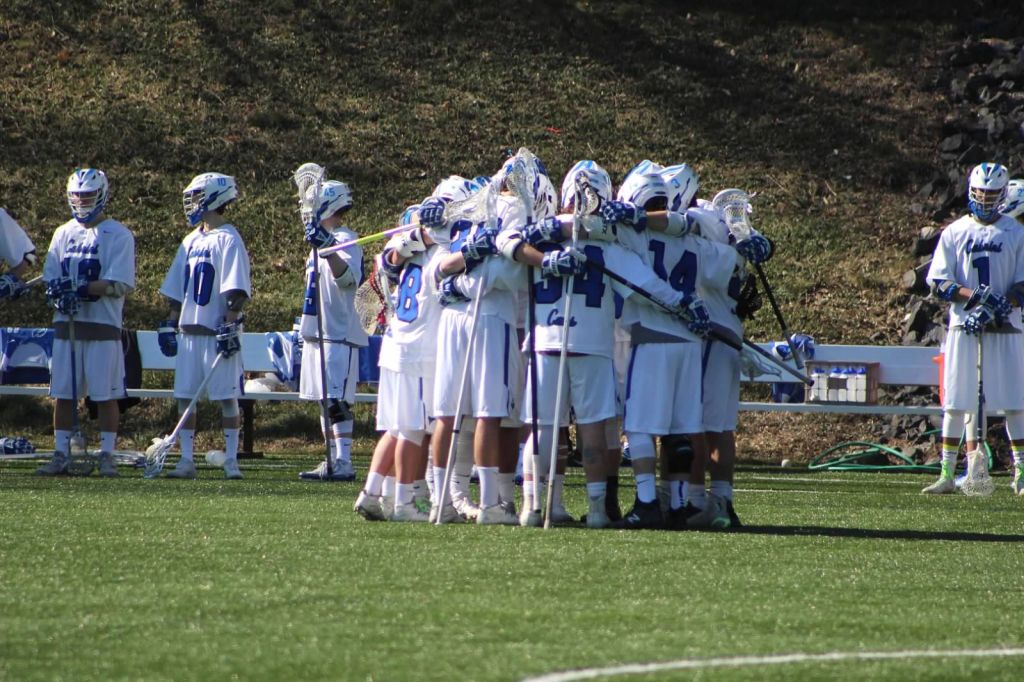
There is a common argument among sports fans about what the most popular sport in America is. One sport is always sorely overlooked, which happens to be the country’s oldest sport.
Lacrosse has been around for centuries. Known as the “Creator’s game,” it was played by Native Americans in the northern parts of what is now the United States, as well as in parts of Canada. The game was played by Native Americans as a healing game, and was played for the Creator’s enjoyment.
Although lacrosse is not the most popular sport, there are many stereotypes and stigmas that surround the game and its players, much like any other sport.
Lacrosse’s most prominent platform is in the NCAA at the division I level with almost 70 men’s programs throughout the country, however, across all levels of play, a stigma follows the game.
The fact of the matter is lacrosse is perceived as a predominantly “privileged- white” sport. According to a 2010 study by the NCAA, just over 90 percent of division I male lacrosse players are white.
But the other fact is that lacrosse is the fastest and largest growing sport in the country. In another study done by the NCAA, lacrosse has increased more efficiently than any other sport. Compared to more widely popular sports whose participation numbers fluctuate and ultimately plateau, lacrosse has seen a steady increase over the past decade.
With that growth, lacrosse has seen some increases in diversity as well. According to NCAA demographic research, when the diversity study was done for the 2009-10’ season, there were almost 10,000 total male lacrosse players in the sport of lacrosse throughout all divisions. Of those athletes almost 91 percent were white and under one percent of players were African American.
When the same study was conducted for the 2015-16’ season, there were over 13,000 male lacrosse players in the country throughout all divisions. Of that only about 85 percent of players were white and almost four percent were African American.
Though the numbers are not very significant, progress is nonetheless shown. But diversity progress in the game of lacrosse can be seen in other ways.
Tommy DeLuca, freshman defender for Cabrini, relates the stigma to cost of lacrosse.
“I think combating the stereotypes comes down to expanding the game to minority areas and spread it from its secluded popular areas,” DeLuca said. “Also supplying equipment where its needed.”
Programs like Harlem Lacrosse are popping up all over the country, and helping underprivileged high school students be engaged in school and create a positive future.
The Harlem Lacrosse programs demographic is 92 percent African-American, Latino or multiracial.
Another sign of diversity can be found at Hampton University. The Hampton University men’s lacrosse team became the first all-black team to play at the Division I level in 2016.
But within the locker rooms and among the players, a much different stereotype is present. The idea of the “lax bro,” has plagued the sport of lacrosse in more recent years. The players who flaunt their long hair and flash their stick skills whenever they get the chance.
But is this really who lacrosse players are?
Cabrini’s most successful sport over the past two decades has been men’s lacrosse. The Cavaliers have won 16 straight conference championships. Under the guidance of head coach Steve Colfer, the Cavaliers have title number 17 in their sights.
Senior defensive midfielder, Colin McGavin, from Springfield, Va., and has been playing lacrosse for 11 years. McGavin believes that social media has skewed the image of what lacrosse players really are.
“I think the generational wave of long-haired players who wear bright-colored uniforms and apparel,” McGavin said. “It’s connected the modern lacrosse player to the hippy culture that engulfed the United States in the mid 1960s to the early 1970s.”
McGavin believes that the parallels drawn between the two cultures, associates both good and bad aspects with each other with is not the case. McGavin’s example is the laid back culture of the hippy era and the reliance on drugs, like marijuana, becomes meshed with the lifestyle of a lacrosse player when it in fact is not the case.
McGavin’s teammate, sophomore midfielder, Billy Morgan, agrees that the stigmas come from social media and media portraying players in a negative light, specifically referencing the “Ultimate Lax Bro,” video.
“I’m guilty of the long hair,” Morgan said. The idea that he lives a lifestyle only based on the length of his hair is not true at all.
The truth of the matter is that perceptions of lacrosse players are not always accurate. The idea that all lacrosse players behave a certain way based on a minority of players in the sport is unfair to those trying to promote and enjoy a growing sport.
“I believe combatting the stigmas starts with the coaches and the players they recruit,” McGavin said. “I think social media needs to show more of the ‘student’ side of lacrosse student athletes.”



